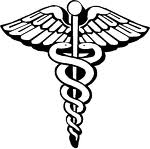
Nuclear reactors is a control system that includes sustainable Nuclear chain reactions. The reactors are used for electricity generation, production of radionuclides (for industry and medicine), scientific research and military purposes. All the different models of jet engines for power generation to achieve the same simple task: a generator of Spinning. Many commercial reactors across the water to heat the fuel rods to produce steam and drive turbines. Some projects require passage through a pile of stones helium to produce fuel for heat. Another project uses a saline solution of sodium as a coolant.

- The heart of the reactor includes all nuclear fuel and generates heat. Containing low-enriched uranium (less than 5% of the control systems U-235), and building materials. The nucleus can contain hundreds of thousands of individual fuel rods.
- Refrigerant is the material that passes through the heart, to transfer heat from the fuel to the turbine. This can be water, heavy water, saline sodium, helium, or something else. In the U.S. fleet of reactors, water is the norm.
- The heat transfer of refrigerant turbine electricity, as fossil fuel plants.
- The spread is the structure that separates the reactor environment. They are usually dome-shaped, high density, steel-reinforced concrete. In Chernobyl, there is no container to speak.
- The cooling towers are required by some plants to drain excess heat, which can be converted into energy because of the laws of thermodynamics. These icons nuclear hyperbolic. They emit only pure water vapor.

This image (reproduced from the NRC) shows a nuclear reactor to heat water and turn a generator to produce electricity. Sytem recognize the essence of the property. Water in the radiator, and then you may be back on the water of the river, lake or sea will stack. As you can see, this water is not close to the radioactivity, which is in the reactor tank.




No comments:
Post a Comment